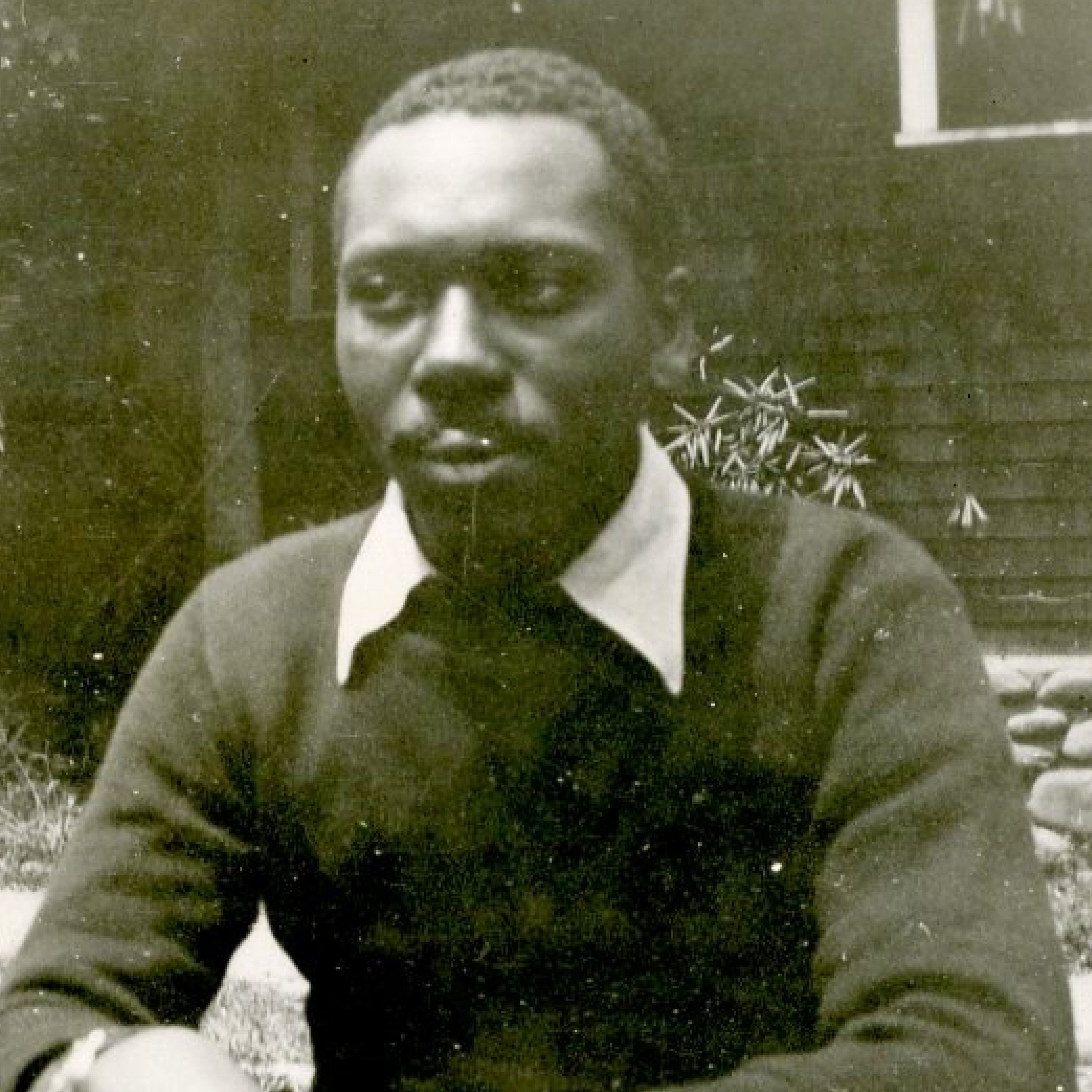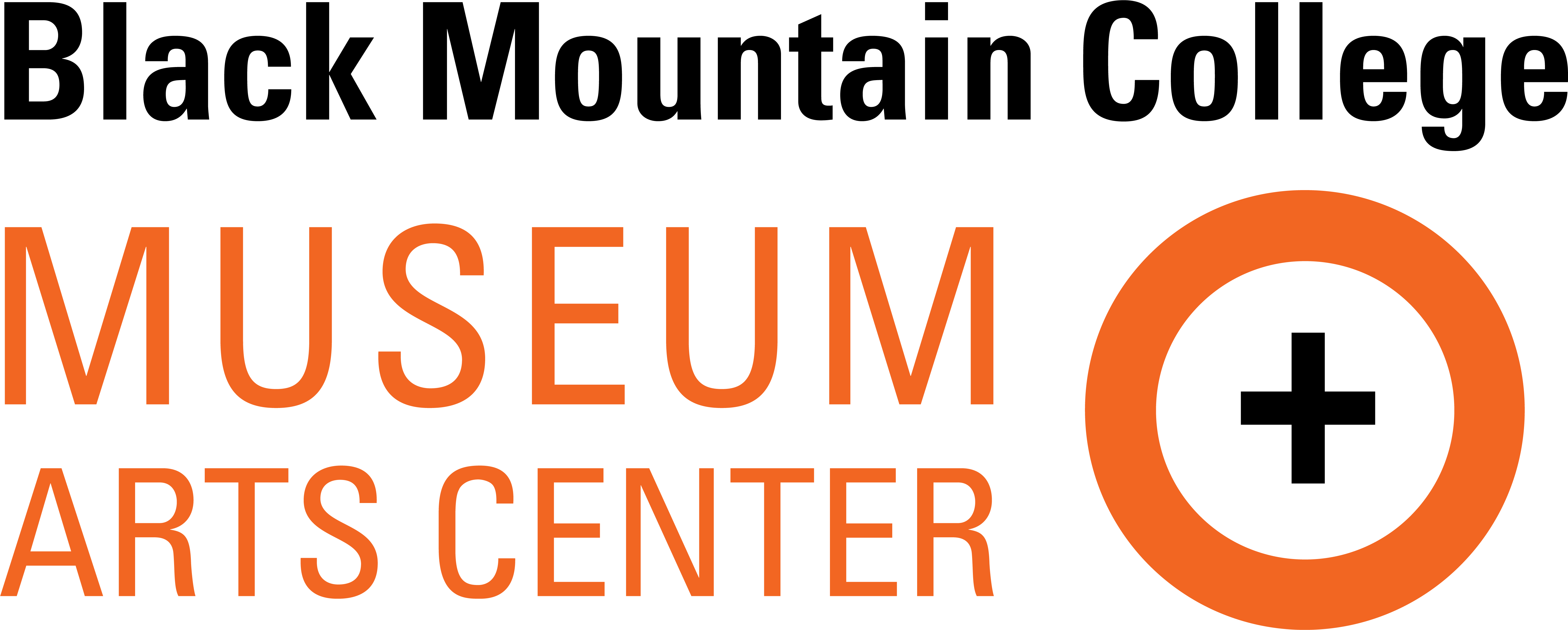Jacob Lawrence

Crop of photo of Gwendolyn Knight and Jacob Lawrence at BMC. Photograph by Bacia Stepner. Courtesy Western Regional Archives
Jacob Lawrence beneath the Trojan Horse, Black Mountain College, 1946. Courtesy of Western Regional Archives.
FOCUS
Art/ Design/ Craft
ROLE
Guest Faculty
ATTENDANCE
1946 - 1946
BIRTH
1917-11-07
Atlantic City, NJ
DEATH
2000-06-09
Seattle, WA
Jacob Lawrence was one the most renowned African American artist of his time. Known for producing narrative collections like the Migration Series and War Series, he illustrated the African American experience using vivid colors set against Black and brown figures. He also served as a professor of art at the University of Washington for 15 years.
Early Life and Career
Born in Atlantic City, New Jersey, on September 7, 1917, Jacob Lawrence moved with his parents to Easton, Pennsylvania, at the age of two. After his parents split in 1924, his mother sent him, along with two other siblings, to a foster care facility in Philadelphia, while she looked for work in New York. At 13, Lawrence and his siblings reunited with their mother who was residing in Harlem.
Encouraging him to explore the arts, Lawrence's mother enrolled him at Utopia Children’s Center, which had an after-school art program. Although he dropped out of school at the age of 16, he continued taking classes at the Harlem Art Workshop with under the mentorship of artist Charles Alston and frequently visited the Metropolitan Museum of Art.
'The Migration Series'
In 1937 Lawrence won a scholarship to the American Artists School in New York. When he graduated in 1939, he received funding from the Works Progress Administration Federal Art Project. He had already developed his own style of modernism, and began creating narrative series, painting 30 or more paintings on one subject. He completed his best-known series, Migration of the Negro or simply The Migration Series, in 1941. The series was exhibited at Edith Halpert's Downtown Gallery in 1942, making Lawrence the first African American to join the gallery.
World War II and After
At the outbreak of World War II, Lawrence was drafted into the United States Coast Guard. After being briefly stationed in Florida and Massachusetts, he was assigned to be the Coast Guard artist aboard a troopship, documenting the war experience as he traveled around the world. During this time, he produced close to 50 paintings but all ended up being lost.
'War Series'
When his tour of duty ended, Lawrence received a Guggenheim Fellowship and painted his War Series. He was also invited by Josef Albers to teach the summer session at Black Mountain College in North Carolina. Albers reportedly hired a private train car to transport Lawrence and his wife to the college so they wouldn’t be forced to transfer to the “colored” car when the train crossed the Mason-Dixon Line.
When he returned to New York, Lawrence continued honing his craft but began struggling with depression. In 1949 he admitted himself into Hillside Hospital in Queens, staying for close to a year. As a patient at the facility, he produced artwork that reflected his emotional state, incorporating subdued colors and melancholy figures in his paintings, which was a sharp contrast to his other works.
In 1951, Lawrence painted works based on memories of performances at the Apollo Theater in Harlem. He also began teaching again, first at Pratt Institute and later the New School for Social Research and the Art Students League.
Teaching and Commissions
In 1971 Lawrence accepted a tenured position as a professor at University of Washington in Seattle, where he taught until he retired in 1986. In addition to teaching, he spent much of the rest of his life painting commissions, producing limited-edition prints to help fund nonprofits like the NAACP Legal Defense Fund, the Children’s Defense Fund and the Schomburg Center for Research in Black Culture. He also painted murals for the Harold Washington Center in Chicago, the University of Washington and Howard University, as well as a 72-foot mural for New York City’s Times Square subway station.
Lawrence painted until a few weeks before he died, on June 9, 2000.
Wife
Lawrence married Gwendolyn Knight, a sculptor and painter, in 1941. She supported his art, providing both assistance and criticism, and helped him compose captions for many of his series.
Biography shared on Biography.com. There are many resources online about Jacob Lawrence and his works, especially on large museum websites, such as the American Art Museum of the Smithsonian and MoMA.
Black Mountain College Project
Mary Emma Harris interviewed Jacob in 1998 and the transcript is available from Appalachian State University under The Mary Emma Harris and Black Mountain College Project, Inc. Oral History collection.
Topics: Invitation to teach at BMC – Cedar Bar – previous trips to South – BMC students – teaching at BMC – Jean Varda as personality in community – Beaumont and Nancy Newhall – Leo Amino – influence of Josef and Anni Albers – Wo-Chi-Ca Camp – dress at BMC – Greekparty – college entertainment – close student-faculty relationship – BMC students – experience in integrated community – mealtimes – travel to and from college – BMC philosophy – meaning of abstraction in art






